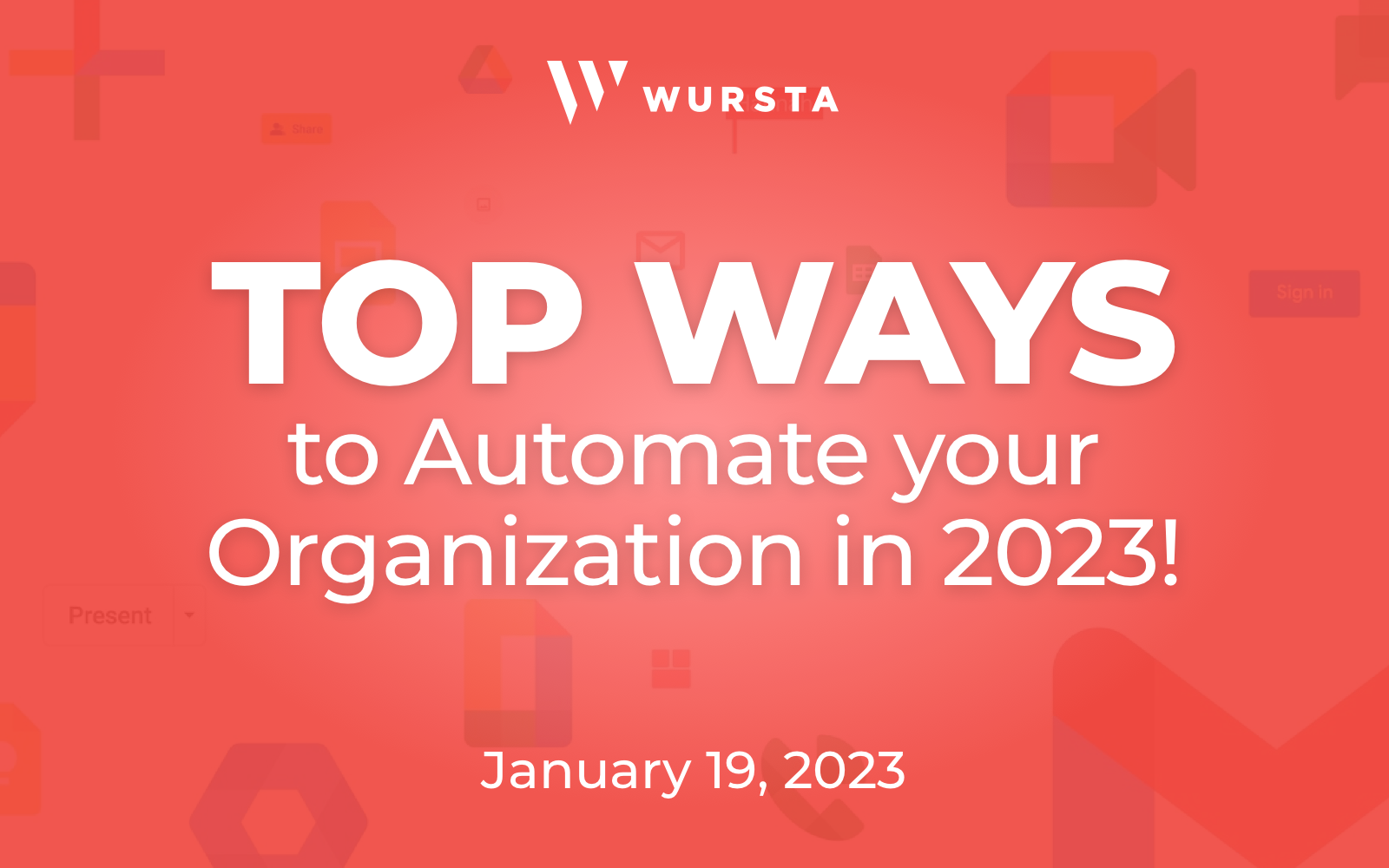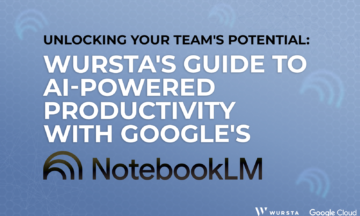Top Ways to Automate your Organization in 2023

Wursta recently presented a webinar, “Top Ways to Automate your Organization in 2023,” in which we shared automations to help save time and make your work more efficient. You can watch the webinar recording and I’ve covered highlights in this blog.
We broke down automation into three key areas:
- Repetitive Tasks: Account provisioning, role access, group membership
- Reporting/ Monitoring: Activity alerts, system alerts
- Incident Response: Data protection, trust rules
First Things First: On-Boarding & Off-Boarding
Automating account lifecycle would be the first area I tackled if I was coming into a new environment as an administrator. Account lifecycle management is an extremely important process, especially on the deprovisioning side. By introducing account automation, administrators can:
- Free up time required to manually setup accounts
- Control costs through better license management
- Improve security by ensuring access is granted and removed in a timely manner
To start that journey, first learn about the HR systems being used in your organization. Out of the box, Google includes many systems for connections. Many cloud-based HRIS systems can integrate directly with Google Workspace while others provide connection ability through API.
Next, work with HR to ensure that each user has the appropriate attribute information associated with their profile, with datapoints such as title, department, and manager. Once the data is available accessible in Workspace, these attributes can be used to automatically provision and deprovision workspace accounts.
Workspace’s New Feature: Dynamic Groups
Using Workspace’s new feature, Dynamic Groups, you can use attribute info to automatically build Google groups, and then use those groups for multiple things, such as:
- Access to Drive resources
- Email distribution lists
- Access to calendars and applications
SCIM Integration: Automate your Cloud Stack
SCIM Integration is available for a number of cloud applications through Workspace, which empowers extensive automations of your cloud stack. Once you’ve established the process of automatically creating Workspace accounts from your HR system, you can you use that profile info to also automatically provision new accounts in other systems, such as Slack and Salesforce.
Creating Ad-Hoc Utilities
Apps Script is Google’s native rapid development platform that makes it easy to create business apps and utilities that integrate with Workspace. You can build an almost endless list of automations.
- Build automations that are triggered by events
- Access Workspace APIs to perform functions on behalf of other users
- Publish advanced Apps Script with a Web UI for a full app experience
- Interact with other Google services, including AdSense, Analytics, Calendar, Drive, Gmail, and Maps
So, I’ll dive into some Apps Script examples.
Coping with Email Attachments
Most of us are well aware of the benefits of sharing links to files on shared drives, but we sometimes still get files as email attachments. Coping with them can get tedious (and hunting around for the info you need is more tedious yet!)
In the webinar, I shared a demo for automating this. The script looks for emails with a designated label, and if they have an attachment, automatically saves it to Google Drive.
I also demonstrated how to:
- Get automatic notifications when a colleague adds new files to a shared Google Drive folder
- Create the same set of folders for each new project ???? I also described this process in another recent blog, “Adding Automations to Google Drive with Apps Script.”
Incident Response Automations
Let’s move on from repetitive tasks to our third key automation area: incident response. This is another area in which we can gain efficiency by setting up automations with Apps Script. Some security-specific examples include:
Drive Data Protection
- Automatically block the sharing of files which contain sensitive data (based on your definition)
- Encourage broad adoption of Google Drive, backed by this safety net to prevent data leakage
Trust and Activity Rules
- Define ways your users can share files based on the types of data they contain
- Block automatic forwarding of emails to a personal account
Context Aware Access
- Define criteria in which a user can or cannot access Google Workspace and associated applications
- Ex: IP restrictions, device restrictions, geofencing (prevent access from a geographic location outside a user’s normal work area)
Contact us to see if Wursta can help your organization with Google Workspace services and automations because “doing less is more.”



